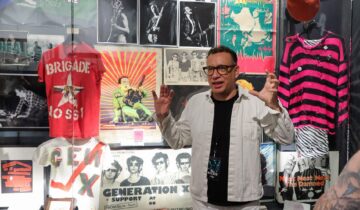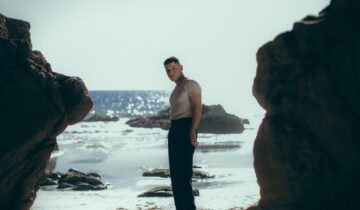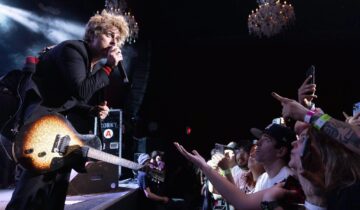 For SF WEEKLY: Electronic dance music, when paired with live instrumentation, can have disastrous results: a tenor sax player, wearing Tevas, soloing endlessly over a pre-programmed keyboard pattern; a live drummer struggling to stay in sync with looped beats; a confused audience. But joined onstage at the Warfield on Friday by brass, woodwinds, string players, and vocalists Szjerdene and Erykah Badu, the musician, DJ, and producer Bonobo (aka Simon Green) carefully avoided these pitfalls.
For SF WEEKLY: Electronic dance music, when paired with live instrumentation, can have disastrous results: a tenor sax player, wearing Tevas, soloing endlessly over a pre-programmed keyboard pattern; a live drummer struggling to stay in sync with looped beats; a confused audience. But joined onstage at the Warfield on Friday by brass, woodwinds, string players, and vocalists Szjerdene and Erykah Badu, the musician, DJ, and producer Bonobo (aka Simon Green) carefully avoided these pitfalls.
“You can’t stay in your comfort zone, or the music just won’t be as exciting,” Green said in an interview a few days before the performance. The enthusiasm level of Friday’s crowd did, however, ebb and flow. The cheering and dancing early on slowed to head-bobbing about midway through, especially during one or two longer, slower-tempo songs, only to rev back up in the tail end of the show. There was a strong sense that Green’s devoted fans like him precisely because he seeks to make the music fresh, even if the result doesn’t always grab one’s attention immediately. The crowd didn’t seem to mind the lulls, because those quiet, pensive moments are in many ways a cornerstone of Bonobo’s music.
Green’s been developing this sound for more than a decade: a relaxed, meditative downtempo approach to electronic dance music that mixes digital elements with live instrumentation and natural sounds like recording the percussive ruffling of a wine bottle cork. The track “Cirrus” on his fifth and latest album, The North Borders, for example, combines electronic beats with recordings of melodies played on a kalimba, an African thumb piano. Green also produced drumbeats for the album by ripping paper and dropping coins into water. The result is earthy dance music with many layers.
Although none of Green’s hired musicians were actually playing wine corks or coins onstage Friday, it was exciting to watch a dozen or so people performing the music as a unified group. The show was proof that live instruments can actually co-exist with digital ones and make something worth dancing to and worth watching. Not surprisingly, Erykah Badu elicited big cheers simply by walking onstage, and her DJ set was an eclectic history lesson in hip-hop, soul, and pop. (It even included Michael McDonald’s “What a Fool Believes.”) She and Green are a good match. With her slinky stage presence and hushed voice, Badu pulls listeners in more with style than brute force.
Once or twice the performance had the feel of a vanity project that could benefit from some simple editing: trimming the long songs just a bit, or adding more distinct breaks in the middle. The slow tempos sometimes felt too slow, and musicians were not always being utilized enough. Horns, for example would play quiet long tones when something punchier and louder might have helped propel the moment. Other times, as when players improvised solos or the live drummer embellished with added fills and riffs, the music got more interesting.
Fans began scurrying out of the venue before the show had ended, but that probably had more to do with catching the last BART train than a lack of interest. Bonobo’s new album and live tour is in many ways a continuation of his 2010 album, Black Sands, a similarly trance-like album that sold more than 150,000 copies globally, spawned an album of remixes, and is now available in deluxe box set form. After more than 10 years of recording and touring, Green has accomplished no small feat in creating his own unique brand of acoustic dance music. The only trick for him is figuring out how to stay out of his comfort zone.
photo by Gary Moskowitz



